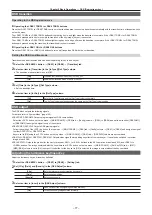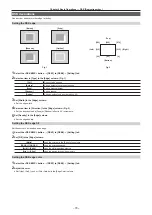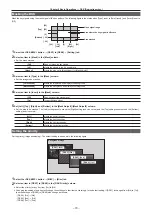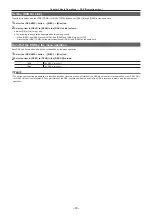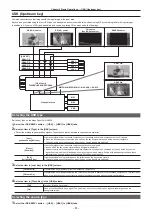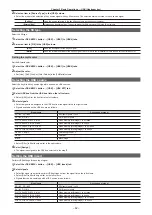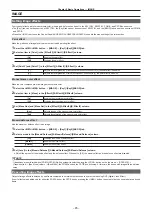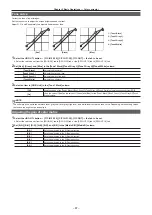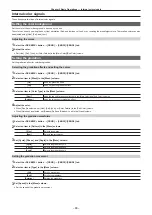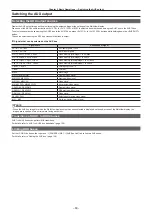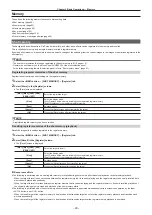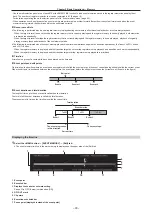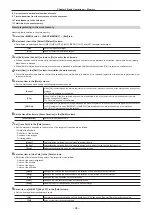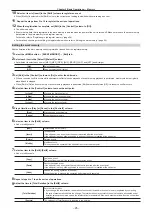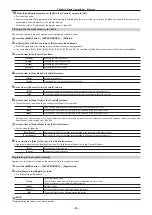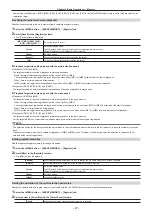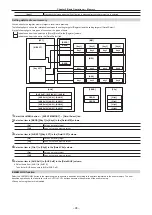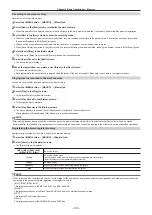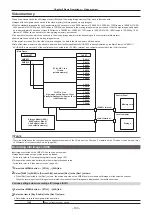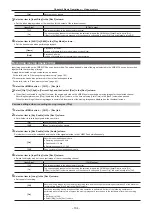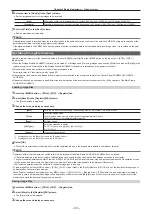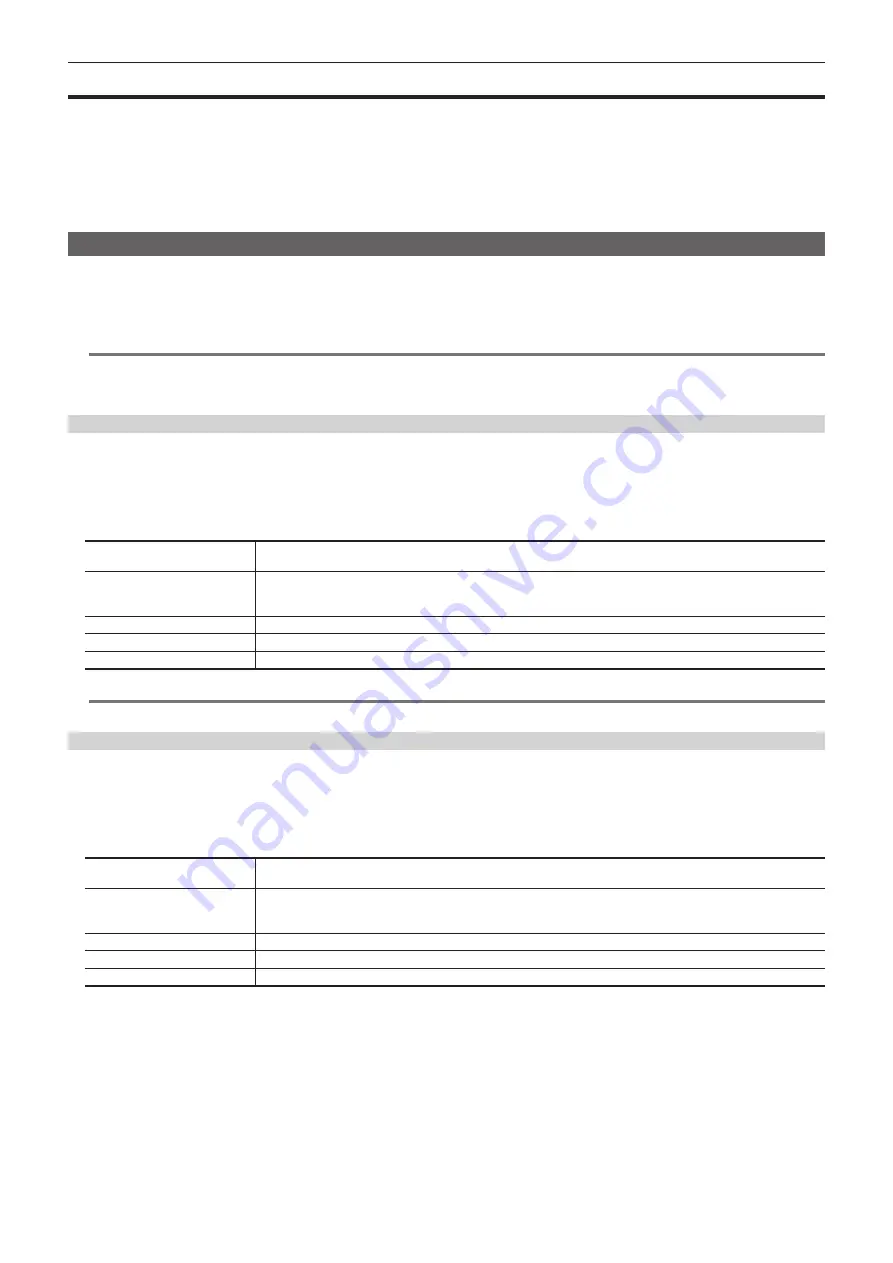
– 90 –
Chapter 5 Basic Operations — Memory
Memory
The unit has the following memory functions to store setting data.
f
f
f
f
f
f
Preset memory of background wipe (page 40)
Shot memory
The background transition pattern, PinP size, border width, and other video effects can be registered in the memory and recalled.
This is called shot memory, and a single memory is called a register memory.
By setting effect dissolve, it is possible to ensure a smooth change of the switching from the current images to the images or operations registered in the
shot memory.
@
@
NOTE
t
The number of memories that can be registered in the shot memory is 81 (9 pages
×
9).
t
Operate the shot memory on the Menu Panel AV-HS60C3 or the multi-selection panel.
For details on operating the multi-selection panel, refer to “Shot memory menu” (page 41).
Registering register memories of the shot memory
Register the current image effect settings in the register memory.
1
Select the <MEM> button
→
[SHOT MEMORY]
→
[Register] tab.
2
Select [Store] in the [Register] column.
f
The [Store] screen is displayed.
[ME1], [ME2], [DSK], [AUX],
[CBGD], [XPT]
Select the registration target.
[View]
Select the display mode.
[ALL]: Displays all the memory including the unregistered register memory.
[Exist]: Displays only the registered register memory.
[Page]
Switches pages.
[Cancel]
Closes the [Store] screen without registering the target.
[OK]
Closes the [Store] screen after registering the target.
@
@
NOTE
t
A registered register memory can be overwritten.
Recalling register memories of the shot memory (playback)
Recall the image effect settings registered in the register memory.
1
Select the <MEM> button
→
[SHOT MEMORY]
→
[Register] tab.
2
Select [Recall] in the [Register] column.
f
The [Recall] screen is displayed.
[ME1], [ME2], [DSK], [AUX],
[CBGD], [XPT]
Select the target to recall.
[View]
Select the display mode.
[ALL]: Displays all the memory including the unregistered register memory.
[Exist]: Displays only the registered register memory.
[Page]
Switches pages.
[Cancel]
Closes the [Recall] screen without recalling the target.
[OK]
Closes the [Recall] screen after recalling the target.
r
Resource conflicts
f
The following is performed when a new register memory is recalled during shot memory effect dissolve playback or event memory playback.
-
When the target to recall does not overlap between the register memory that is currently playing and the register memory to be newly recalled, both
memories are played independently.
-
When the target to recall overlaps between the register memory that is currently playing and the register memory to be newly recalled, playback of
the originally playing memory stops and playback of the new memory starts.
f
The following is performed when the shot memory effect dissolve playback is performed simultaneously with the transition operation by the fader,
<AUTO> button, and <CUT> button.
-
When the recall target of the register memory to be played and the transition target do not overlap, register memory playback and transition each
works independently.
-
When the recall target of the register memory to be played and the transition target overlap, register memory playback is prioritized.
Summary of Contents for AV-HS60C1E
Page 5: ...Please read this chapter and check the accessories before use Chapter 1 Overview ...
Page 52: ...This chapter describes menu operations Chapter 5 Basic Operations ...
Page 162: ...This chapter describes the difference with the Standard mode Chapter 9 3G mode 4K mode ...
Page 168: ...This chapter describes the terminals and signals of the unit Chapter 10 External Interfaces ...
Page 184: ...This chapter describes the setting menu table and terms Chapter 12 Appendix ...
Page 206: ...Web Site http www panasonic com Panasonic Corporation 2014 ...


